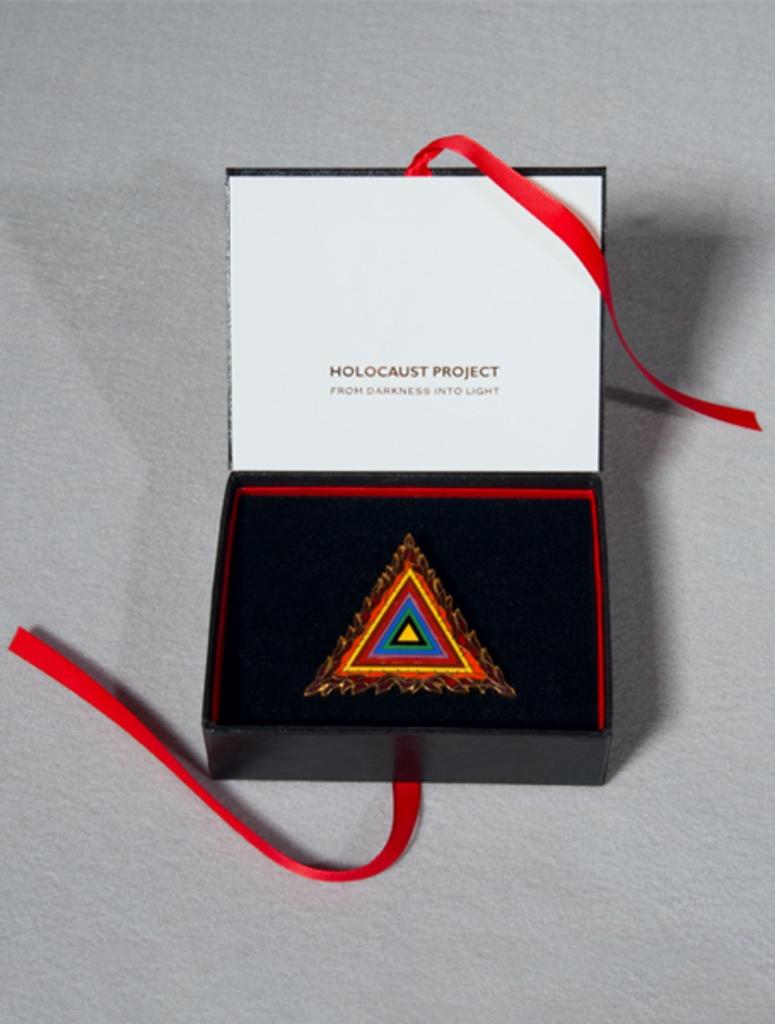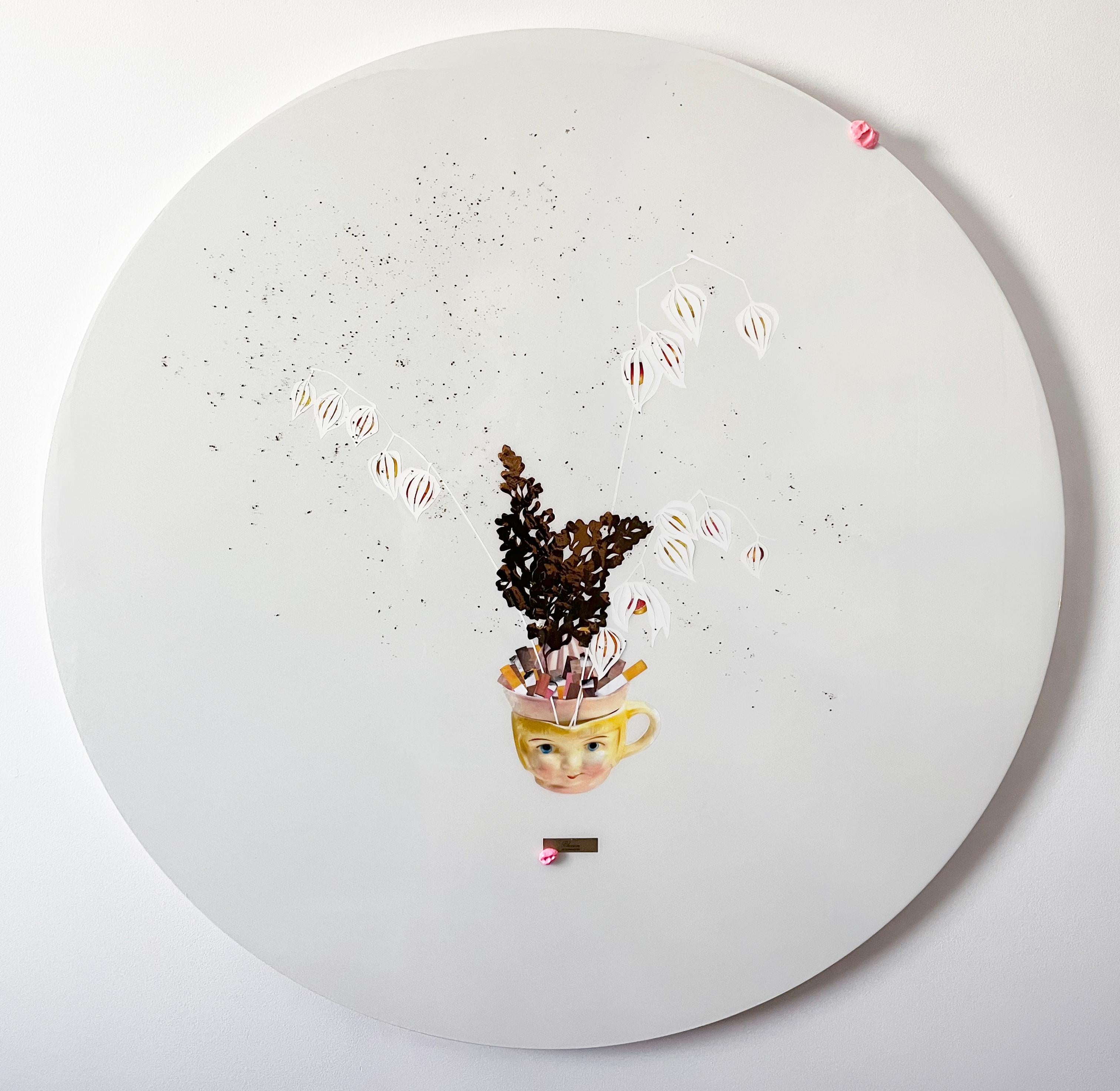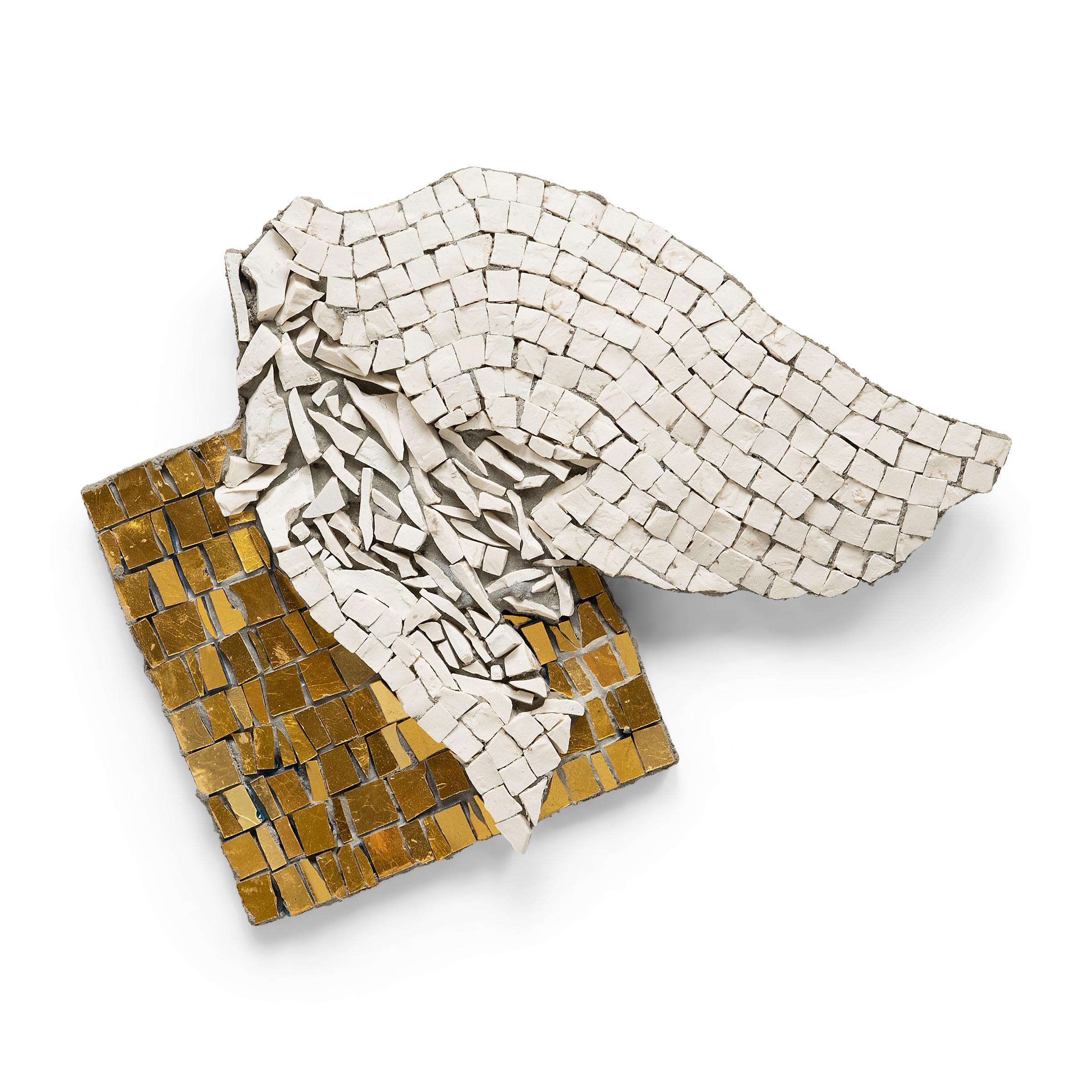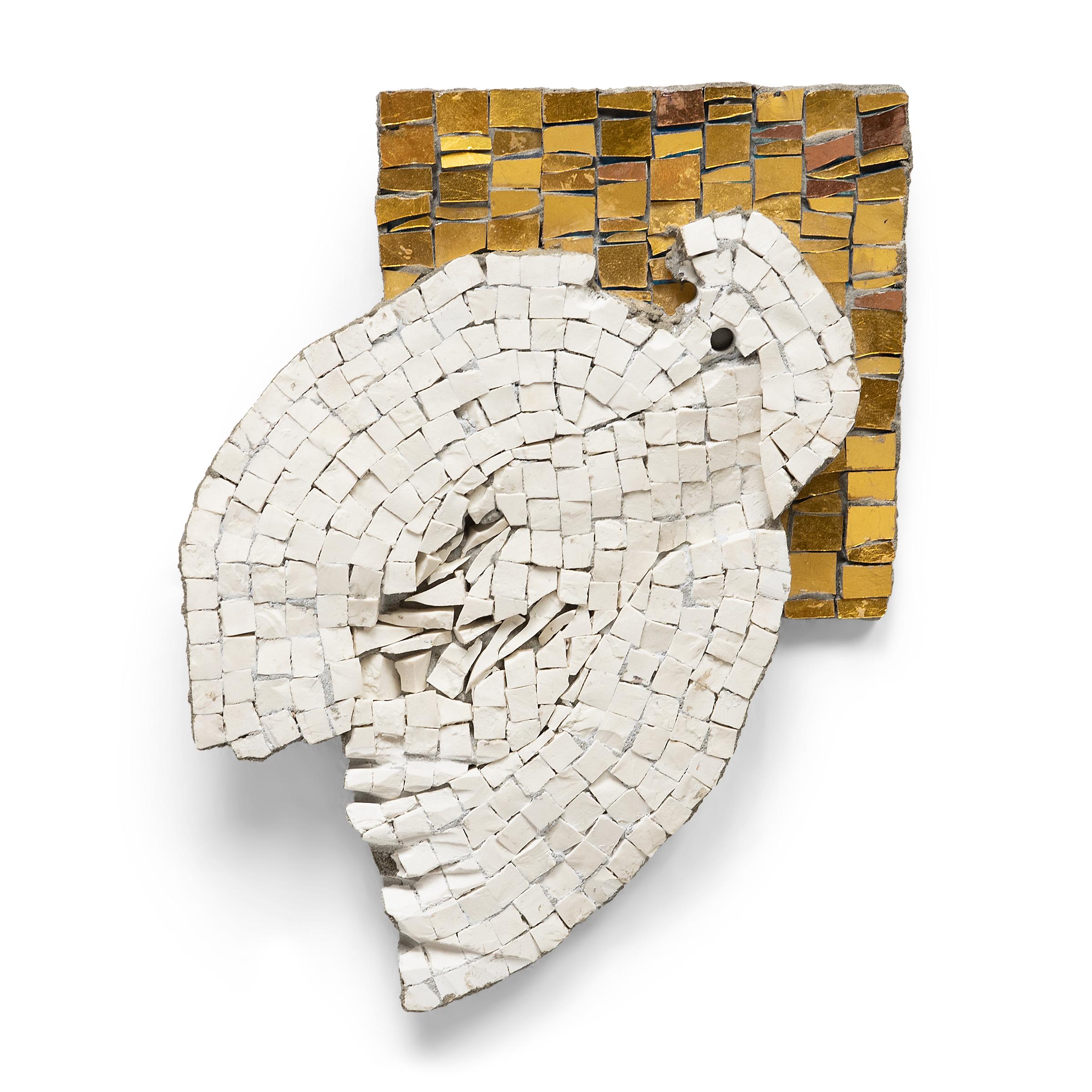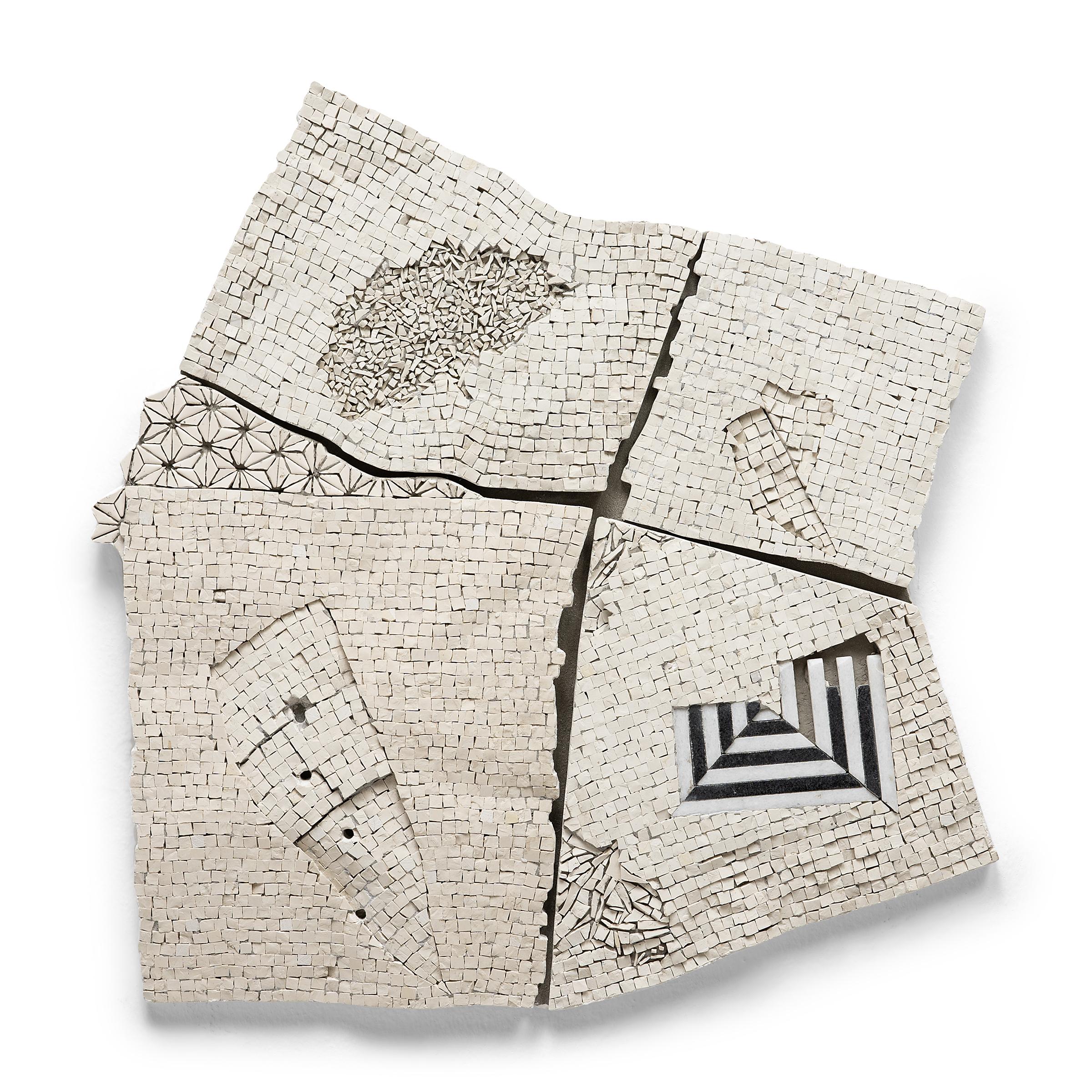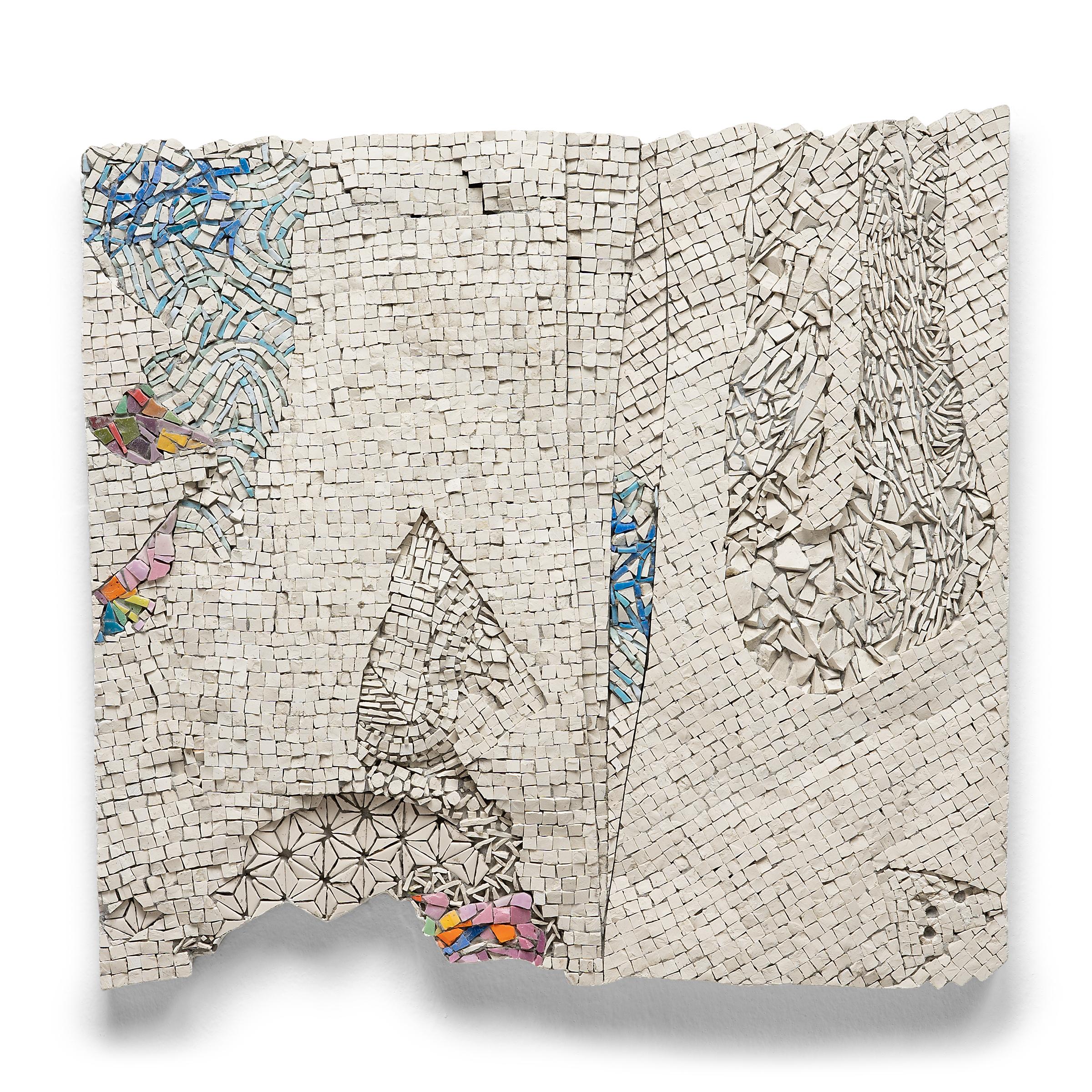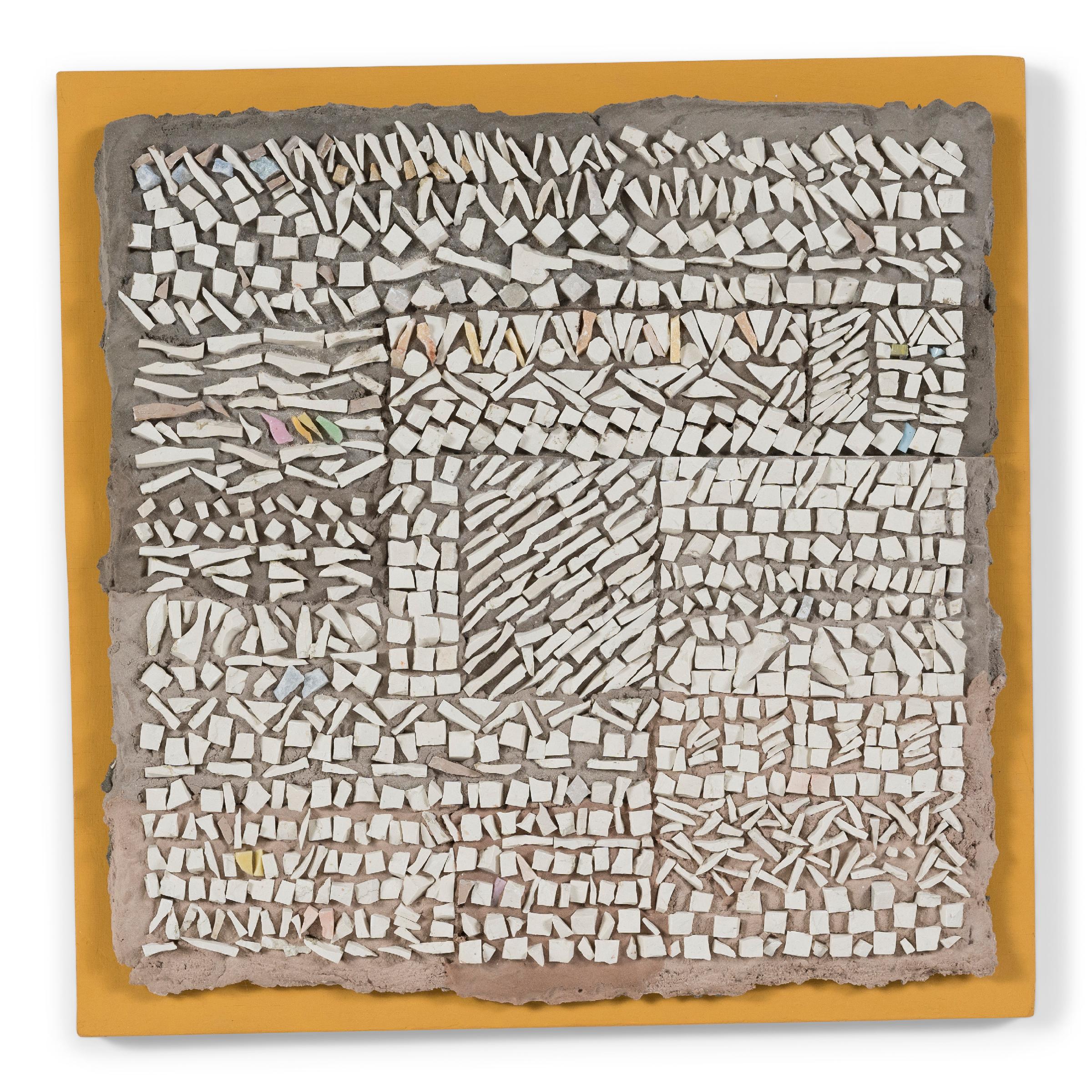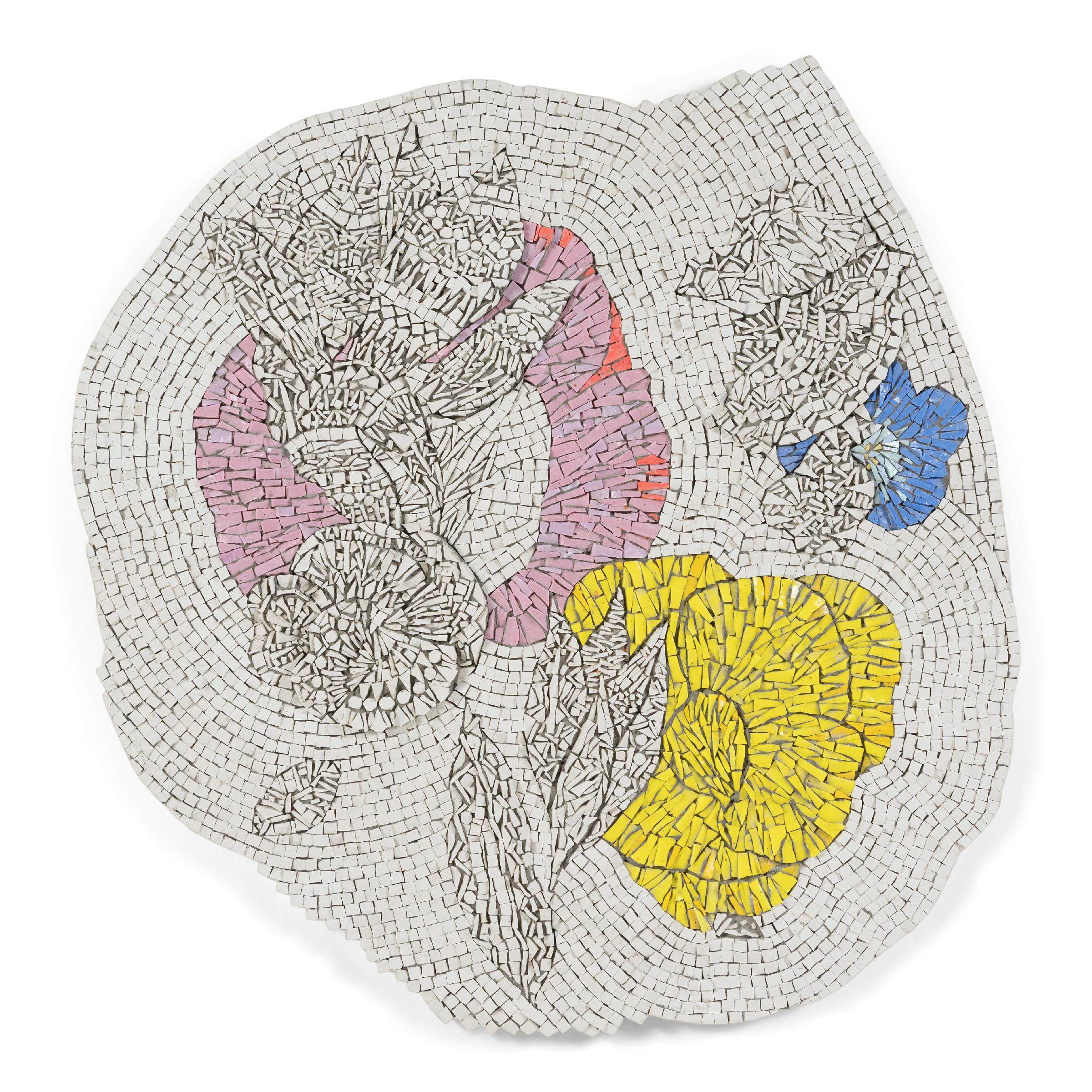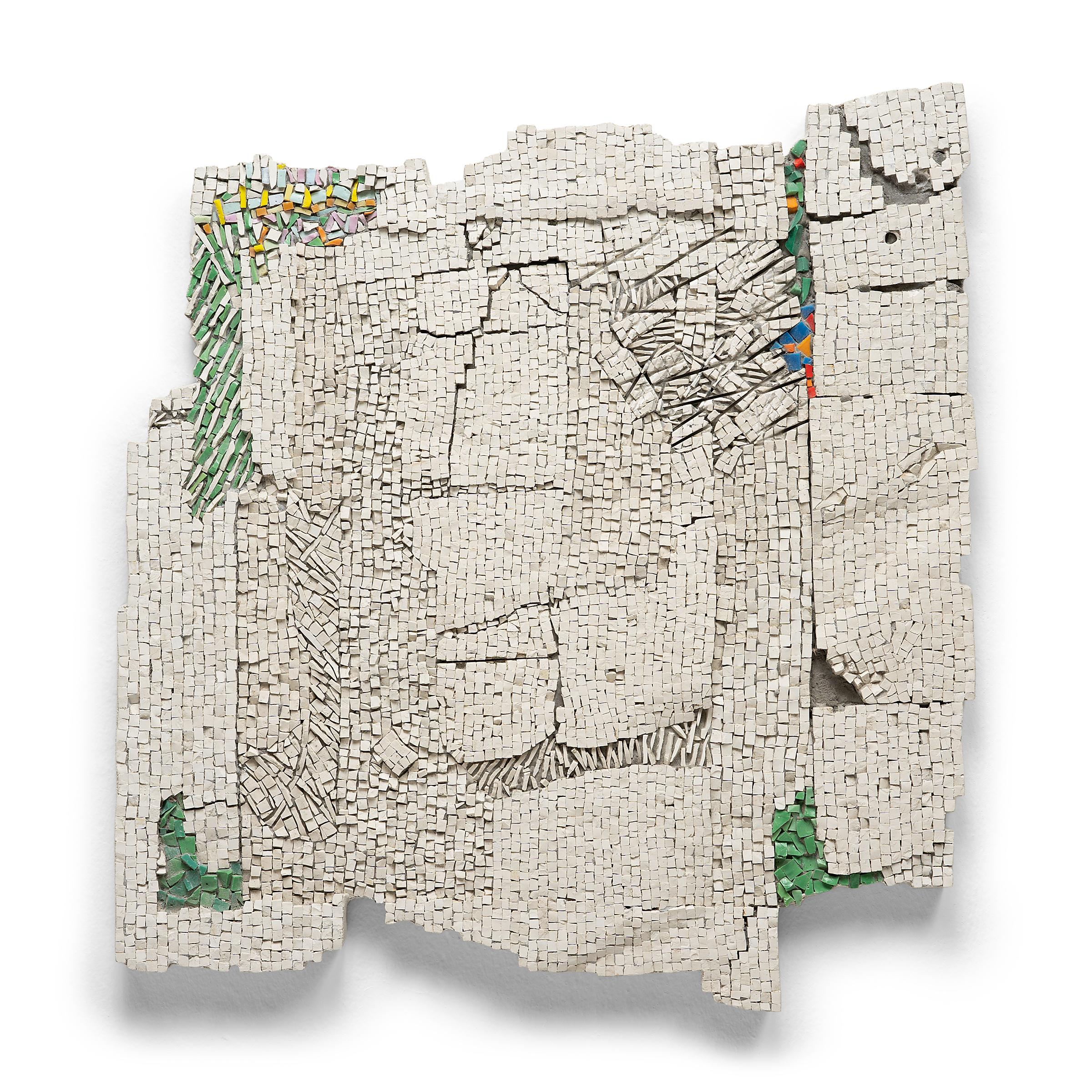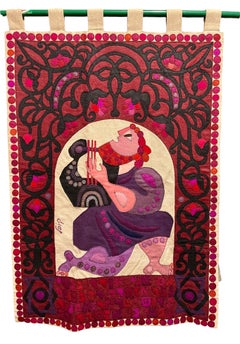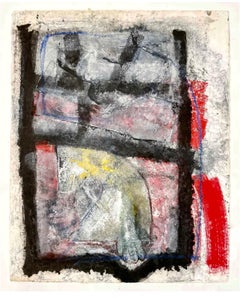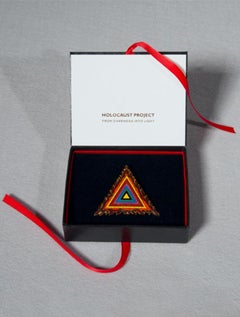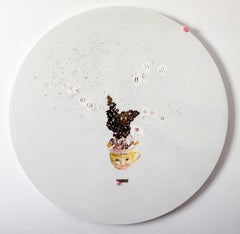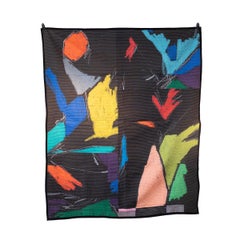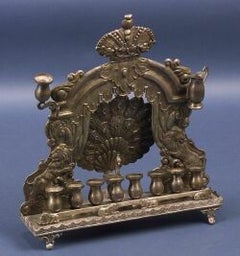
Rare Antique Silver Peacock Hanukah Lamp Judaica Menorah
View Similar Items
Want more images or videos?
Request additional images or videos from the seller
1 of 2
UnknownRare Antique Silver Peacock Hanukah Lamp Judaica Menorah
About the Item
- Dimensions:Height: 13.5 in (34.29 cm)
- Period:
- Condition:good, one minor repair on leg.
- Gallery Location:Surfside, FL
- Reference Number:1stDibs: G140331382115
About the Seller
4.9
Platinum Seller
These expertly vetted sellers are 1stDibs' most experienced sellers and are rated highest by our customers.
Established in 1995
1stDibs seller since 2014
1,549 sales on 1stDibs
Typical response time: 1 hour
More From This SellerView All
- Wool Felt Craft Applique Vintage Israeli Judaica Folk Art Tapestry Kopel GurwinBy Kopel GurwinLocated in Surfside, FLThis depicts King David playing the harp, along with a verse in Hebrew from the Psalms. all made by hand. woven and stitched. Vintage, original piece. Kopel Gurwin (Hebrew: קופל גורבין) (1923–1990) was an Israeli tapestry wall hanging, painter and graphic artist. Kopel (Kopke') Gurwin (Gurwitz) was born and raised in Vilna, the capital of Lithuania. He spoke Yiddish at home, but simultaneously studied Hebrew at their school which was part of the Tarbut educational network. Kopel was active in the Hashomer Hatzair youth movement. In the 1930s, as a teenager, Kopel helped his parents with the home finances by working in a suit workshop, there he first encountered the art of sewing. With the outbreak of the Second World War and the German invasion of Vilna, the Jews were imprisoned in camps and ghettos. Kopel and his brother Moshe were separated from their parents and were put to work in coal mines and peat. Kopel's parents were taken to the Stutthof Nazi concentration camp where they died of typhus within a month of each other. Kopel's 12-year-old sister Chava was turned over to the Germans by a Polish family and murdered. The brothers were arrested by the Germans, but were saved thanks to the connections of Nina Gerstein, Kopel's drama teacher. They hid in an attic until they were discovered, fled and moved to Riga, where they were caught and sent to the Stutthof concentration camp where they were imprisoned until the end of the war. They were put to work maintaining and cleaning trains and took part in one of the death marches. In July 1946, Kopel and Moshe sailed to Helsingborg, Sweden, as part of operation "Folke Bernadotte", in which Sweden took in ill survivors for rehabilitation. Once he recovered, Kopel worked in a publishing house and later was appointed director of the local branch of the Halutz movement. In 1950 Kopel and Moshe made aliyah to Israel. Kopel worked as a survey for the Survey of Israel Company. In 1951, he enlisted to the Communication Corps and served as a military draftsman. There he won first prize for the design of the front cover of the Communication Corps bulletin. With his discharge from the army at 29 he started studying drawing and graphics at the Bezalel Academy of Arts and Design in Jerusalem. Among his teachers were Isidor Ascheim, Shlomo Vitkin, Yossi Stern and Jacob Steinhardt. At the end of his first year of study, Kopel won the Reuben and Sarah Lif Excellence Award in written studies. During his studies he also won additional prizes: In 1956 he won first prize from the Lethem Foundation in California for poster design. Later the same year, Kopel won the Hermann Struck prize for his drawing on the theme of Jerusalem. In 1957 he won an additional first prize from the Lethem Foundation and second place from the printing company Ortzel for a drawing for a Jewish New Year greeting card. In 1958 he won first prize in a competition to design a poster for Tel Aviv's jubilee. Two years later he won three other awards: First and third prize for designing a poster for Israel Independence Day, celebrating 12 years of the State of Israel. Also that year Kopel won first prize for a poster to mark the 25th Zionist Congress. In 1964 he entered the Independence Day poster competition on the theme of aliyah and won first and second prize. Four years later he again entered the competition on the theme of 20 years of Israel's independence and won first prize. The poster was styled like a Holy Ark curtain with two lions and a menorah at its centre. This poster appeared on the cover of the famous book Jewish Art and Civilization, edited by Geoffrey Wigoder as well as the record Voices of 20 Years, 1948-1968, edited by Yossi Godard. In April 1971 he won first prize in the Independence Day poster competition for the fourth time. Kopel's Folk Art tapestry won the Israeli Independence Day Poster Contest in 1968 With the completion of his studies at Bezalel Kopel moved to Tel Aviv and was hired by Shmuel Grundman's graphics and design studio. Grundman took him to Europe with him to design and supervise the construction of Israeli exhibition pavilions. During his time at Grundman's he discovered the fibrous felt from which he produced most of his wall hangings. At the 1964 Levant Fair exhibition he used felt stuck onto wooden panels for the first time. The first felt wall hanging that Kopel produced was intended for the American Cultural Centre in Jerusalem and its theme was the United States Declaration of Independence. The wall hanging, which measured 2.85 X 1.85 meters, was stuck on a wooden panel. Kopel ordered rolls of felt from France and began work on wall hangings based on bible stories. He used a needle, hand sewing small even stitches with black embroidery thread which framed and highlighted every detail in the work, as well as using appliqué. The interior designer, Alufa Koljer-Elem, introduced him to Ruth Dayan who managed the shop Maskit in September 1967 he opened his first solo exhibition at the Maskit 6 gallery, in which 12 wall hangings were displayed. In light of the exhibition at Maskit 6, Meira Gera, the director of artistic activity at the America-Israel Cultural Foundation, organized an additional exhibition of his works at the foundation's exhibition hall in New York City. The exhibition sparked immense press interest, and was also displayed for a few months at the New York Jewish Museum, from where it travelled throughout the United States. Followed by the exhibition at the Delson-Richter gallery in Old Jaffa, which was later also exhibited at the Jerusalem Theatre. Kopel's tapestry "The Time for Singing has Arrived" was printed on a UNICEF greeting card in 1978 and again in 1981. The Israeli Philatelic Service issued three stamps based on three of Kopel's holy ark curtains and one stamp based on an Independence Day poster he designed. Kopel's creations decorate a large number of synagogues, public buildings, hotels and private collections which were purchased in Israel and around the world. They have decorated, among others, the walls of the King David Hotel...Category
20th Century Folk Art Mixed Media
MaterialsWool, Felt
- Large 3D Cast Paper Abstract Oil Monoprint Unique Monotype Painting John WalkerBy John WalkerLocated in Surfside, FLJohn Walker British (b. 1939) Salsipuedes Forms (1991) Monoprint relief print with dry pigment, monotype Hand signed lower right Provenance: Garner Tullis Workshop A monotype is literally one of a kind; it is not a method of multiplication. The artist makes an image with a liquid medium on wood, metal or glass, and paper is laid over the moist image and bonded under pressure the paper is then removed bringing with it the transposed monotype. John Walker (born 1939) is an English painter and printmaker. He has been called "one of the standout abstract painters of the last 50 years." Walker studied in Birmingham at the Moseley School of Art, and later the Birmingham School of Art and Académie de la Grande Chaumière in Paris. Some of his early work was inspired by abstract expressionist art and post-painterly abstraction, and often combined apparently three-dimensional, sculptural shapes with "flatter" elements. These pieces are usually rendered in acrylic paint. In the early 1970s, Walker made a series of large...Category
1990s Abstract Expressionist Mixed Media
MaterialsMonoprint, Monotype
- Large 3D Cast Paper Abstract Oil Monoprint Unique Monotype Painting John WalkerBy John WalkerLocated in Surfside, FLJohn Walker British (b. 1939) Salsipuedes Forms (1991) Monoprint relief print with dry pigment, monotype Hand signed lower right Provenance: Garner Tullis Workshop A monotype is literally one of a kind; it is not a method of multiplication. The artist makes an image with a liquid medium on wood, metal or glass, and paper is laid over the moist image and bonded under pressure the paper is then removed bringing with it the transposed monotype. John Walker (born 1939) is an English painter and printmaker. He has been called "one of the standout abstract painters of the last 50 years." Walker studied in Birmingham at the Moseley School of Art, and later the Birmingham School of Art and Académie de la Grande Chaumière in Paris. Some of his early work was inspired by abstract expressionist art and post-painterly abstraction, and often combined apparently three-dimensional, sculptural shapes with "flatter" elements. These pieces are usually rendered in acrylic paint. In the early 1970s, Walker made a series of large...Category
1990s Abstract Expressionist Mixed Media
MaterialsMonoprint, Monotype
- Art Deco French Modernist Handmade Aubusson Gobelin Tapestry Jean Picart Le DouxBy Jean Picart Le DouxLocated in Surfside, FLJean Picart Le Doux, French (1902 - 1982) "Au Rendez Vous Des Oiseaux" Larger handmade wool Aubusson tapisserie Produced by Maison M. Berthaut Aubusson Atelier, France. Signed Lower left corner woven with firm's monogram and lower right with artists full name. Bears stitched label attached en verso. Original documents included with the lot. Measures 71-1/2" x 50". Jean Picart Le Doux, born in Paris in 1902 and died in 1982, was a French painter and painter-cartonnier the revival of contemporary flat weave tapestry. He is the son of the painter Charles Picart Le Doux (1881-1959). His first tapestry dating from 1943 after winning the Grand Prix of the theater poster exhibition in the imaging. He met Jean Lurcat and, and Marc Saint-Saëns,and together they founded the Association of painters cardboard tapestry in 1947. In 1950, he comes up with the idea for the Alliance Graphique Internationale, during the meeting with exhibitors of an exhibition of their work in Basel, Switzerland along with two other French designers Jean Jacques Colin and Nathan, and two Swiss graphic designers, Fritz Buhler and Donald Brown. AGI is officially founded November 22, 1952 and Picart Le Doux will be its first president. Picart Le Doux was a French artist noted for his role in the revival of contemporary hand woven Aubusson tapestry. Picart Le Doux's first tapestry cartoon was a diptych entitled The Four Seasons. Made in 1943...Category
Mid-20th Century Modern More Art
MaterialsWool
- Wool Felt Applique Israeli Folk Art Signed Tapestry Kopel Gurwin Bezalel SchoolBy Kopel GurwinLocated in Surfside, FLThis depicts a Crab, In Hebrew Mazel Sartan (the Zodiac symbol Cancer, June-July) all made by hand. woven and stitched. Kopel Gurwin (Hebrew: קופל גורבין) (1923–1990) was an Israeli tapestry wall hanging, painter and graphic artist. Kopel (Kopke') Gurwin (Gurwitz) was born and raised in Vilna, the capital of Lithuania. He spoke Yiddish at home, but simultaneously studied Hebrew at their school which was part of the Tarbut educational network. Kopel was active in the Hashomer Hatzair youth movement. In the 1930s, as a teenager, Kopel helped his parents with the home finances by working in a suit workshop, there he first encountered the art of sewing. With the outbreak of the Second World War and the German invasion of Vilna, the Jews were imprisoned in camps and ghettos. Kopel and his brother Moshe were separated from their parents and were put to work in coal mines and peat. Kopel's parents were taken to the Stutthof Nazi concentration camp where they died of typhus within a month of each other. Kopel's 12-year-old sister Chava was turned over to the Germans by a Polish family and murdered. The brothers were arrested by the Germans, but were saved thanks to the connections of Nina Gerstein, Kopel's drama teacher. They hid in an attic until they were discovered, fled and moved to Riga, where they were caught and sent to the Stutthof concentration camp where they were imprisoned until the end of the war. They were put to work maintaining and cleaning trains and took part in one of the death marches. In July 1946, Kopel and Moshe sailed to Helsingborg, Sweden, as part of operation "Folke Bernadotte", in which Sweden took in ill survivors for rehabilitation. Once he recovered, Kopel worked in a publishing house and later was appointed director of the local branch of the Halutz movement. In 1950 Kopel and Moshe made aliyah to Israel. Kopel worked as a survey for the Survey of Israel Company. In 1951, he enlisted to the Communication Corps and served as a military draftsman. There he won first prize for the design of the front cover of the Communication Corps bulletin. With his discharge from the army at 29 he started studying drawing and graphics at the Bezalel Academy of Arts and Design in Jerusalem. Among his teachers were Isidor Ascheim, Shlomo Vitkin, Yossi Stern and Jacob Steinhardt. At the end of his first year of study, Kopel won the Reuben and Sarah Lif Excellence Award in written studies. During his studies he also won additional prizes: In 1956 he won first prize from the Lethem Foundation in California for poster design. Later the same year, Kopel won the Hermann Struck prize for his drawing on the theme of Jerusalem. In 1957 he won an additional first prize from the Lethem Foundation and second place from the printing company Ortzel for a drawing for a Jewish New Year greeting card. In 1958 he won first prize in a competition to design a poster for Tel Aviv's jubilee. Two years later he won three other awards: First and third prize for designing a poster for Israel Independence Day, celebrating 12 years of the State of Israel. Also that year Kopel won first prize for a poster to mark the 25th Zionist Congress. In 1964 he entered the Independence Day poster competition on the theme of aliyah and won first and second prize. Four years later he again entered the competition on the theme of 20 years of Israel's independence and won first prize. The poster was styled like a Holy Ark curtain with two lions and a menorah at its centre. This poster appeared on the cover of the famous book Jewish Art and Civilization, edited by Geoffrey Wigoder as well as the record Voices of 20 Years, 1948-1968, edited by Yossi Godard. In April 1971 he won first prize in the Independence Day poster competition for the fourth time. Kopel's Folk Art tapestry won the Israeli Independence Day Poster Contest in 1968 With the completion of his studies at Bezalel Kopel moved to Tel Aviv and was hired by Shmuel Grundman's graphics and design studio. Grundman took him to Europe with him to design and supervise the construction of Israeli exhibition pavilions. During his time at Grundman's he discovered the fibrous felt from which he produced most of his wall hangings. At the 1964 Levant Fair exhibition he used felt stuck onto wooden panels for the first time. The first felt wall hanging that Kopel produced was intended for the American Cultural Centre in Jerusalem and its theme was the United States Declaration of Independence. The wall hanging, which measured 2.85 X 1.85 meters, was stuck on a wooden panel. Kopel ordered rolls of felt from France and began work on wall hangings based on bible stories. He used a needle, hand sewing small even stitches with black embroidery thread which framed and highlighted every detail in the work, as well as using appliqué. The interior designer, Alufa Koljer-Elem, introduced him to Ruth Dayan who managed the shop Maskit in September 1967 he opened his first solo exhibition at the Maskit 6 gallery, in which 12 wall hangings were displayed. In light of the exhibition at Maskit 6, Meira Gera, the director of artistic activity at the America-Israel Cultural Foundation, organized an additional exhibition of his works at the foundation's exhibition hall in New York City. The exhibition sparked immense press interest, and was also displayed for a few months at the New York Jewish Museum, from where it travelled throughout the United States. Followed by the exhibition at the Delson-Richter gallery in Old Jaffa, which was later also exhibited at the Jerusalem Theatre. Kopel's tapestry "The Time for Singing has Arrived" was printed on a UNICEF greeting card in 1978 and again in 1981. The Israeli Philatelic Service issued three stamps based on three of Kopel's holy ark curtains and one stamp based on an Independence Day poster he designed. Kopel's creations decorate a large number of synagogues, public buildings, hotels and private collections which were purchased in Israel and around the world. They have decorated, among others, the walls of the King David...Category
20th Century Folk Art Mixed Media
MaterialsWool, Felt
- Wool Felt Applique Israeli Folk Art Signed Tapestry Kopel Gurwin Bezalel SchoolBy Kopel GurwinLocated in Surfside, FLThis depicts KIng David reciting Psalms, Hallelujah in Hebrew Kopel Gurwin (Hebrew: קופל גורבין) (1923–1990) was an Israeli tapestry wall hanging, painter and graphic artist. Kopel (Kopke') Gurwin (Gurwitz) was born and raised in Vilna, the capital of Lithuania. He spoke Yiddish at home, but simultaneously studied Hebrew at their school which was part of the Tarbut educational network. Kopel was active in the Hashomer Hatzair youth movement. In the 1930s, as a teenager, Kopel helped his parents with the home finances by working in a suit workshop, there he first encountered the art of sewing. With the outbreak of the Second World War and the German invasion of Vilna, the Jews were imprisoned in camps and ghettos. Kopel and his brother Moshe were separated from their parents and were put to work in coal mines and peat. Kopel's parents were taken to the Stutthof Nazi concentration camp where they died of typhus within a month of each other. Kopel's 12-year-old sister Chava was turned over to the Germans by a Polish family and murdered. The brothers were arrested by the Germans, but were saved thanks to the connections of Nina Gerstein, Kopel's drama teacher. They hid in an attic until they were discovered, fled and moved to Riga, where they were caught and sent to the Stutthof concentration camp where they were imprisoned until the end of the war. They were put to work maintaining and cleaning trains and took part in one of the death marches. In July 1946, Kopel and Moshe sailed to Helsingborg, Sweden, as part of operation "Folke Bernadotte", in which Sweden took in ill survivors for rehabilitation. Once he recovered, Kopel worked in a publishing house and later was appointed director of the local branch of the Halutz movement. In 1950 Kopel and Moshe made aliyah to Israel. Kopel worked as a survey for the Survey of Israel Company. In 1951, he enlisted to the Communication Corps and served as a military draftsman. There he won first prize for the design of the front cover of the Communication Corps bulletin. With his discharge from the army at 29 he started studying drawing and graphics at the Bezalel Academy of Arts and Design in Jerusalem. Among his teachers were Isidor Ascheim, Shlomo Vitkin, Yossi Stern and Jacob Steinhardt. At the end of his first year of study, Kopel won the Reuben and Sarah Lif Excellence Award in written studies. During his studies he also won additional prizes: In 1956 he won first prize from the Lethem Foundation in California for poster design. Later the same year, Kopel won the Hermann Struck prize for his drawing on the theme of Jerusalem. In 1957 he won an additional first prize from the Lethem Foundation and second place from the printing company Ortzel for a drawing for a Jewish New Year greeting card. In 1958 he won first prize in a competition to design a poster for Tel Aviv's jubilee. Two years later he won three other awards: First and third prize for designing a poster for Israel Independence Day, celebrating 12 years of the State of Israel. Also that year Kopel won first prize for a poster to mark the 25th Zionist Congress. In 1964 he entered the Independence Day poster competition on the theme of aliyah and won first and second prize. Four years later he again entered the competition on the theme of 20 years of Israel's independence and won first prize. The poster was styled like a Holy Ark curtain with two lions and a menorah at its centre. This poster appeared on the cover of the famous book Jewish Art and Civilization, edited by Geoffrey Wigoder as well as the record Voices of 20 Years, 1948-1968, edited by Yossi Godard. In April 1971 he won first prize in the Independence Day poster competition for the fourth time. Kopel's Folk Art tapestry won the Israeli Independence Day Poster Contest in 1968 With the completion of his studies at Bezalel Kopel moved to Tel Aviv and was hired by Shmuel Grundman's graphics and design studio. Grundman took him to Europe with him to design and supervise the construction of Israeli exhibition pavilions. During his time at Grundman's he discovered the fibrous felt from which he produced most of his wall hangings. At the 1964 Levant Fair exhibition he used felt stuck onto wooden panels for the first time. The first felt wall hanging that Kopel produced was intended for the American Cultural Centre in Jerusalem and its theme was the United States Declaration of Independence. The wall hanging, which measured 2.85 X 1.85 meters, was stuck on a wooden panel. Kopel ordered rolls of felt from France and began work on wall hangings based on bible stories. He used a needle, hand sewing small even stitches with black embroidery thread which framed and highlighted every detail in the work, as well as using appliqué. The interior designer, Alufa Koljer-Elem, introduced him to Ruth Dayan who managed the shop Maskit in September 1967 he opened his first solo exhibition at the Maskit 6 gallery, in which 12 wall hangings were displayed. In light of the exhibition at Maskit 6, Meira Gera, the director of artistic activity at the America-Israel Cultural Foundation, organized an additional exhibition of his works at the foundation's exhibition hall in New York City. The exhibition sparked immense press interest, and was also displayed for a few months at the New York Jewish Museum, from where it travelled throughout the United States. Followed by the exhibition at the Delson-Richter gallery in Old Jaffa, which was later also exhibited at the Jerusalem Theatre. Kopel's tapestry "The Time for Singing has Arrived" was printed on a UNICEF greeting card in 1978 and again in 1981. The Israeli Philatelic Service issued three stamps based on three of Kopel's holy ark curtains and one stamp based on an Independence Day poster he designed. Kopel's creations decorate a large number of synagogues, public buildings, hotels and private collections which were purchased in Israel and around the world. They have decorated, among others, the walls of the King David Hotel in Jerusalem, the VIP room at Ben Gurion Airport, the Kfar Saba theatre and the Plaza Hotel in Tel Aviv. Israel has had a Vibrant Folk Art, Naive art scene for a long time now artists like Israel Paldi, Nahum Guttman, Reuven Rubin had naive periods. The most well know of the strict naive artists are Shalom of Safed, David Sharir, Irene Awret, Gabriel Cohen, Natan Heber, Michael Falk and Kopel Gurwin. Exhibitions: 1995 The Knesset Jerusalem 1988 Temple Beth Shalom Miami, Florida 1988 University of Jewish Studies Los Angeles 1987 Israel Congregation on the Northern Coast Chicago 1985 Jerusalem Theatre Jerusalem 1984 Tenafly New Jersey 1983 Horace Richter Gallery Old Jaffa 1974 Jerusalem Theatre Jerusalem 1974 Delson Richter Gallery Old Jaffa 1972 University of Jewish Studies Miami, Florida 1971 Jewish Museum New York 1970 Norman Gallery Canada 1970 Sharei Tzedek Congregation Winnipeg, Canada 1970 Gallery of the Year Los Angeles 1970 Gallery of the Year Scottsdale 1969 Gleeman Gallery Chicago 1969 Israel Congregation of the Northern Coast Chicago 1967 Maskit 6 Tel Aviv Prizes: 1971 First Independence Day poster 1971, 23 yeaes of the State of Israel 1969 Second International Tel Aviv poster...Category
20th Century Folk Art Mixed Media
MaterialsWool, Felt
You May Also Like
- Holocaust Remembrance Logo Pin and PendantBy Judy ChicagoLocated in New York, NYJudy Chicago Logo Pin and Pendant, 1993 Enameled pin with pendant loop in original presentation box 2 1/2 × 2 1/2 × 1/5 inches Judy Chicago's incised name and date on the verso Comes in original presentation gift box Poignant enameled Holocaust Project Logo pin & pendant based on the logo designed by Judy Chicago for the Holocaust Project: From Darkness into Light More about pioneering artist Judy Chicago Judy Chicago (born Judith Sylvia Cohen; July 20, 1939) is an American feminist artist, art educator, and writer known for her large collaborative art installation pieces about birth and creation images, which examine the role of women in history and culture. During the 1970s, Chicago founded the first feminist art program in the United States at California State University, Fresno (formerly Fresno State College) which acted as a catalyst for feminist art and art education during the 1970s. Her inclusion in hundreds of publications in various areas of the world showcases her influence in the worldwide art community. Additionally, many of her books have been published in other countries, making her work more accessible to international readers. Chicago's work incorporates a variety of artistic skills, such as needlework, counterbalanced with skills such as welding and pyrotechnics. Chicago's most well known work is The Dinner Party, which is permanently installed in the Elizabeth A. Sackler Center for Feminist Art at the Brooklyn Museum. The Dinner Party celebrates the accomplishments of women throughout history and is widely regarded as the first epic feminist artwork. Other notable art projects by Chicago include International Honor Quilt, Birth Project, Powerplay, and The Holocaust Project. She is represented by Jessica Silverman...Category
1990s Abstract Geometric Mixed Media
MaterialsMetal, Enamel
- Blossom : No Sugar AddedLocated in Nashville, TNThis contemporary piece from Danielle Krysa asks the viewer if beauty can be born from the wreckage of whatever each of our personal setbacks may be. The piece was created for Krysa'...Category
2010s Contemporary Mixed Media
MaterialsBrass
- Untitled Quilt.D #9Located in Detroit, MICalico Cotton, Vintage Fade Poly/Cotton and Denim, 69.5 x 83 inches, 2022 (Hanging hardware included) Julian J. Jones quilts made from images taken from the artist’s gestural, abstract drawings are inspired by traditional African American quilting...Category
2010s Abstract More Art
MaterialsCotton, Textile, Digital
- "Gamaliel, " Mixed Media Mosaic, 2023Located in Chicago, ILIn the series “Heavenly,” Toyoharu Kii honors the fullness of life and its continual rebirth. In some works, white tesserae assume abstract profiles. In others, irregular shapes cont...Category
21st Century and Contemporary Contemporary More Art
MaterialsMarble
- "Raguel, " Mixed Media Mosaic, 2021Located in Chicago, ILIn the series “Heavenly,” Toyoharu Kii honors the fullness of life and its continual rebirth. In some works, white tesserae assume abstract profiles. In others, irregular shapes cont...Category
21st Century and Contemporary Contemporary More Art
MaterialsMarble
- "Matriel, " Mixed Media Mosaic, 2022Located in Chicago, ILIn the series “Heavenly,” Toyoharu Kii honors the fullness of life and its continual rebirth. In some works, white tesserae assume abstract profiles. In others, irregular shapes cont...Category
21st Century and Contemporary Contemporary More Art
MaterialsMarble
Recently Viewed
View AllMore Ways To Browse
Judaica Menorah
Antique Oil Lamp Fonts
Antique Silver Menorahs
Antique Menorah Silver
Silver Menorah Antique
Antique Silver Menorah
19th Menorah
Menorah 19th Century
Standing Peacock
Antique Silver Peacock
Antique Peacock Lamp
Antique Peacock Lamps
Oil Jug Antique
Antique Judaica Silver
Antique Silver Judaica
Judaica Antiques
Antique Jug Lamp
Antique Oil Menorah
